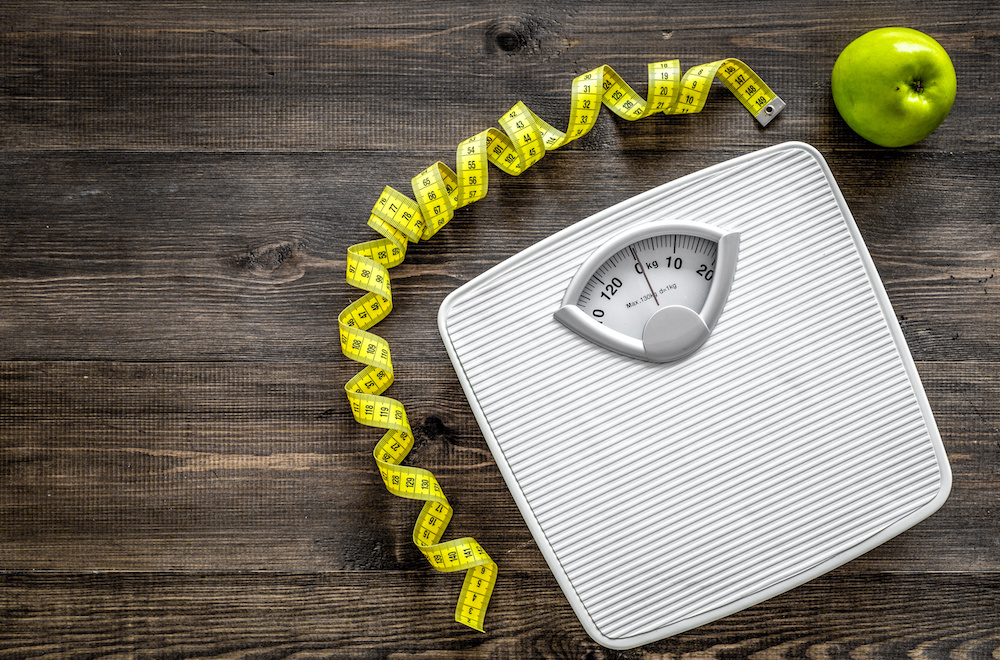Everything You Need to Know About Your Basal Metabolic Rate

In layman’s terms, basal metabolic rate is a standardised measure of how fast or how slow your metabolism is. People often talk about having a fast or slow metabolism as if this is an explanation for them either struggling to put on weight or more often putting on too much weight or failing to lose weight.
Knowing your metabolic rate is useful as it is a key part of working out the number of calories you need per day. It is also a useful thing to measure, particularly for people where energy requirements are difficult to predict, and in certain circumstances where your metabolic rate may change, such as ageing, the menopause, weight loss, exercise.
Put simply your metabolic rate is the amount of energy you burn (expressed in Kcal or kJ per day) while lying at rest or in other words, doing nothing. To get technical, your basal metabolic rate (BMR) is defined by how it’s measured under very standardised conditions.
Specifically, this is having fasted overnight for 12 hours, with no exercise, caffeine, or alcohol in the previous 24 hours. Your metabolic rate is then measured while you are lying flat on a bed, for a minimum of 20 minutes, in thermo-neutral conditions (i.e. 25oC).
These strict conditions are deliberate so as to eliminate other factors that will influence how much energy you burn. In practice, we’re more likely to measure your resting metabolic rate, which is very similar but slightly less strict (measured after an eight hour fast and at room temperature). More often still, we can estimate people’s metabolic rate using equations.
In this piece, I shall summarise some key aspects of your basal metabolic rate, and how knowing about it can be useful to you.

How To Calculate Your Basal Metabolic Rate
Your metabolic rate is really a reflection of the subsistence level of energy use in the body, excluding any energy need for movement, heat generation, digestion, and absorption. About a third of your basal metabolic rate is spent synthesising biological molecules. Another third is spent simply pumping ions and substrates across membranes. Yet only 20 percent is spent on mechanical work like your heart rate and breathing.
A big factor in determining your metabolic rate is simply your size and composition. To some extent the bigger you are the higher your metabolic rate. In this regard, you can roughly say your metabolic rate is equivalent to 1kcal/kg/hour. This would equate to around 1400 calories a day for a woman and around 1800 calories a day for a man.
Obviously, it is more nuanced than this. Your fat-free mass (everything that isn’t fat), is the major energy-consuming part of the body. Specifically, your organs are the most costly, for example, your liver and your brain alone account for half the energy cost at rest.
The Variations Between People
People of different sizes tend to vary, more so in terms of muscle and fat mass rather than organ mass. Most obviously, men and women of the same weight will have different metabolic rates due to the higher fat mass and lower fat-free mass in women.
However, most variability in basal metabolic rate can simply be explained by body-size, age, and gender. Hence, two people of the same size, age, and gender will likely have very similar metabolic rates. For this reason, various equations exist that can fairly confidently predict an individuals’ metabolic rate based on these parameters. These equations are derived from thousands of actual measurements of metabolic rate across a range of people.
For the most part, these predictive equations are pretty accurate when compared with actual measures. I myself have measured metabolic rate in many hundreds of people and the difference is typically within 100 calories a day or less. Someone with high muscle mass (typically corresponding to low-fat mass), will have a slightly higher metabolic rate compared to someone else of the same gender and weight.
Equally, someone with lots of fat mass will also have a higher than predicted metabolic rate for three reasons:
- They have a lot of fat mass that is not energetically inert.
- The fat mass will contribute to extra energy cost of breathing, particularly lying supine when measuring metabolic rate.
- Obese people are actually acclimatised to a higher calorie intake and so deliberately have a higher metabolic rate. More on this later.
You may be surprised to learn that some athletes have a lower than predicted metabolic rate, mainly because they are more efficient at using energy as a result of training, especially endurance type training.

How Many Calories Do I Need?
The most obvious use of metabolic rate is in working out someone’s energy requirement. It is no coincidence that metabolic rate is expressed as kcal or kJ per day, as it is the major component of your daily energy expenditure. For most people, your metabolic rate equates to about a third of your overall daily energy requirement.
The other main components of your energy expenditure are physical activity, and dietary-induced thermogenesis or DIT (the energy cost of digestion, absorption, transport, and storage of what you eat). As you can imagine, physical activity is the most variable component of energy expenditure, and also includes all the other non-exercise physical activities of daily living, which accounts for the majority in most people.
Energy expenditure can be estimated by adding together the energy cost of metabolic rate, physical activity, and DIT. For simplicity, DIT is often assumed to be a fixed proportion of the total, so essentially you are calculating it based on an estimate of metabolic rate and some measure of physical activity. To standardise it we express physical activity as a multiple of metabolic rate, both for individual activities or exercise, as an overall average across the day.
For example, if walking at a moderate pace you may be burning three times your metabolic rate, whereas swimming butterfly stroke may be 11 times your metabolic rate. Average this over a 24-hour period, including rest and sleep, then overall you may be expending 1.5 to 1.8 times your metabolic rate. This multiplier is called your physical activity level (PAL).
The Recommended Guidelines
Measuring actual physical activity is very tricky, but we can actually measure total energy expenditure over several days in free-living people using the doubly labelled water method. If we know what the total energy expenditure (TEE) is per day, and we know what the metabolic rate is then we can extrapolate the physical activity level (i.e. PAL = TEE/BMR).
This is what is done when trying to work out the energy requirements for a population and forms the basis of the dietary recommended intakes for energy. On a population basis, the average PAL is around 1.6, so when you multiply this by predicted metabolic rates, average requirements are approximately 2300kcal per day for women and 2800kcal per day for men.
If you go out and actually measure total energy expenditure in the population the average will come out fairly similar to these recommended requirements. Yet, obviously on an individual level, this is very variable, not just because of subtle differences in actual metabolic rate but mainly down to variability in physical activity. Hence, two people of the same size, age, and gender could have energy requirements that vary by over 1000 calories per day which is far beyond anything you may see in metabolic rate itself.

Why Might Your Metabolism Be Slow?
The notion that your metabolism may be too fast or too slow has often been suggested as an explanation for difficulty in maintaining a healthy weight, but is there any truth to this?
As explained in previous sections, much of the variability in metabolic rate is predictable, however, one factor we have not fully discussed is age. Metabolic rate decreases by 2-3 percent per decade after the age of 20, meaning not just that by the age of 70 it is significantly lower, but it can be noticeably lower in middle age too.
This decline in basal metabolic rate is associated with changes in body composition that also change with age, such as loss of body protein and muscle mass and a change in fat distribution. This loss of muscle mass is accelerated in over-65s, and further still in situations such as sarcopenia.
The Effects Of Age
But it’s not just metabolic rate that declines with age, DIT and PAL also gradually declines with age. All these changes are often associated with declines in energy intake too, with people having smaller appetites and eating less in older age. This can be a real issue for much older adults who may struggle to meet energy requirements despite the reductions.
Yet for a middle-aged population these subtle declines in total energy expenditure (metabolic rate and physical activity), with the same energy intake (or possible increased intake), can significantly contribute to a propensity to gain weight or change adiposity ( aka the middle-aged spread). Appreciating you cannot simply eat like a 20-year-old anymore can be impactful to someone in middle age.
There are other situations where metabolic rate may significantly change. For women there may be more pronounced acute changes in metabolic rate that occur because of the menopause, as the changes in oestrogen impact on energy expenditure (specifically mediated by brown adipose tissue) and contribute to reductions in basal metabolic rate. Individuals with an under-active thyroid (hypothyroidism) will also have lower than expected metabolic rates, which can impact up to 10 percent of women over the age of 40.

Obesity And Weight Loss
One other circumstance that is important to appreciate in terms of ‘slow’ metabolic rate is to do with obesity and weight loss. It is not uncommon for overweight and obese people to blame their weight on a slow metabolism, but this is an inaccurate statement.
Overweight and obese people will typically have a higher metabolic rate than lean people as explained previously, often even after correcting for weight. There’s a certain adjustability to your metabolic rate, and when you are in energy surplus you will try to offset this by increasing your metabolic rate, predominantly by up-regulating thermogenesis (energy wasting as heat).
Due to this adaptive thermogenesis, obese people have an acclimatised metabolic rate that is higher than normal. There remains a debate as to whether obese people have less adjustability in metabolic rate than lean people, but it is not a clear explanation for someone’s propensity to gain weight.
For overweight and obese people, it is more important to appreciate the change in metabolic rate that can occur in response to attempts to lose weight. Given that you start with an elevated metabolic rate to begin with means when you try to lose weight by eating less, your metabolic rate decreases by way of adjustment, even more so than a lean person. This drop in energy expenditure due to reduced short term thermogenesis, will hinder weight loss as it will decrease the true calorie deficit, and lead to you plateauing in weight sooner than expected.
How Can You Change Your Basal Metabolic Rate?
Given that many people have the belief that they have a ‘slow’ metabolism, the obvious next question is how someone can ‘speed it up’. But first we need to clarify what we mean by this question. The notion that you can turn up your metabolism and ‘burn off’ excess weight is really a complete misnomer, certainly in terms of metabolic rate.
As we have already discussed, obese people tend to have a higher than predicted metabolic rate and that the reduction in metabolic rate in response to weight loss is the key issue. In addition, during most weight loss attempts you are also eating less, which means that diet induced thermogenesis will also be less.
So how can you mitigate this conundrum? One strategy would be to influence the change in body composition that occurs by preserving or even building muscle, whilst predominantly losing body fat. This will help you to maintain a slightly higher metabolic rate as you are retaining more active tissue.
However, your metabolic rate will still decrease relatively in response to weight loss, even after correcting for weight change and body composition. You can certainly reduce the magnitude of this drop, but you still need to appreciate it will decrease in absolute terms.

What About Exercise? Surely That Increases Your Basal Metabolic Rate?
Well yes, and no. Many people discuss the acute response that exercise has on metabolic rate, depicted as Excessive Post-exercise Oxygen Consumption (EPOC) – the so called “after burn” effect of exercise. This absolutely exists, and is particularly noticeable following higher intensities of exercise, and will lead to a higher energy expenditure at rest for several hours. Hence, they would have a higher metabolic rate if you measured it within this period.
The important point to make about EPOC is why it happens in the first place. This has nothing to do with your body deliberately burning more energy, but is a strategy to deliver more oxygen to the tissues. This is necessary as you pay back the fuels expended during exercise, specifically your creatine phosphate and carbohydrate stores.
Having more oxygen means you can use your oxidative energy systems to recycle adenosine triphosphate and spare glucose. So the early phase of EPOC is about fuel management, not burning more energy. Even in the later phases of EPOC, where protein synthesis may be elevated to repair and build damaged muscle, this is still a strategy to manage fuels and the availability of substrates like amino acids.
However, measurements of basal metabolic rate are so standardised to often eliminate this acute effect of exercise, hence most reportedly higher metabolic rates in exercisers or athletes refer to measured resting energy expenditure, not BMR.
BMR is, basal, so it refers to the base or lowest possible energy requirement for homeostasis. Therefore, the higher metabolic rate in some active people is likely down to this acute EPOC effect, because they have exercised recently. Nevertheless, in reality, this acute effect of exercise is significant because if an individual is exercising regularly, say 3 times a week or more, then they will be in some form of EPOC all the time. They will then potentially have a higher metabolic rate potentially.
However, the counter to this is that a lot of the training adaptation to exercise, for example in endurance training, actually improves metabolic efficiency, which is why you may see some athletes with similar or even lower basal metabolic rates than your average person.
Are There Other Strategies To Increase Your Basal Metabolic Rate?
Caffeine, capsicum or hot pepper, and green tea extract are all examples of dietary components or supplements that have been proposed to increase metabolic rate. However, they mainly work through their effects on dietary induced thermogenesis (DIT), rather than your metabolic rate per se.
Even then, the magnitude of effect even on DIT is small and often undetectable, certainly in the typical doses found in foods, from my experience of testing them. Some effects have been shown on extracted components in supplemental form but again, the results are often of such small magnitude as to seem irrelevant. Nevertheless, that does not prevent them being incorporated and sold in a variety of slimming products.

Why Might It Be Important To Pay Attention To Your Basal Metabolic Rate?
Given all that we have discussed, I hope you appreciate how useful it is to know about your basal metabolic rate. On the one hand, it gives you a good gauge of how many calories you may need. In most cases and for most people, BMR can be reliably predicted based on existing equations based on weight, gender, and age, without the need to actually try and measure it.
However, it is useful to appreciate certain situations where your basal metabolic rate might change. For example, as you get older, during menopause and in response to weight loss or training. That does not mean that you need to seek out ways of accurately measuring your metabolic rate; more understand that you may need to take this into consideration when estimating how much you need to eat or drink, or, adjusting expectant weight loss.
There are obviously cases where predicting metabolic rate becomes problematic and therefore you need to measure it. The clearest example of this need is in a clinical setting, where illness can elevate your metabolic rate way beyond predicted levels. For example, in burns patients, those with fever, and certain cancers. In contrast, other conditions may depress metabolic rate over and above predicted, for example very low body weight eating disorder patients (specifically anorexia nervosa).
Nevertheless, differences in basal metabolic rate between healthy people and changes in basal metabolic rate within the same person may be subtle but significant. Furthermore, alongside all the other variability in physical activity (and diet-induced thermogenesis), this undermines our ability to accurately measure an individual’s energy requirement on a day to day basis.
Looking Beyond Your Metabolic Rate
So you could argue, how useful is basal metabolic rate as a measurable entity, on an individual level? I would argue it is more useful to look beyond your BMR because it is not just how many calories you are burning, but what you are burning to supply those calories that is important.
Since the advent of indirect calorimetry, we have been measuring energy expenditure based on measured oxygen consumption and carbon dioxide production. However, this also allows us to gain insight into the the proportion of fat and carbohydrate being oxidised for energy too. This becomes useful when distinguishing health and disease risk. For example, a reduced ability to oxidise fat at rest and in response to fat feeding, can be a marker of metabolic risk associated with obesity, insulin resistance, metabolic syndrome and diabetes.
Similarly your ability to switch between carbohydrate burning and fat burning, for example in response to fasting, a meal, or exercise is indicative of metabolic health. Therefore, knowing an individual’s response and adaptability in terms of energy and fuels, or metabolic flexibility, can be incredibly insightful. This is not just to ascertain risk or disease but more usefully understand the impact of interventions such as diet composition, meal timing, exercise and their interaction.


















